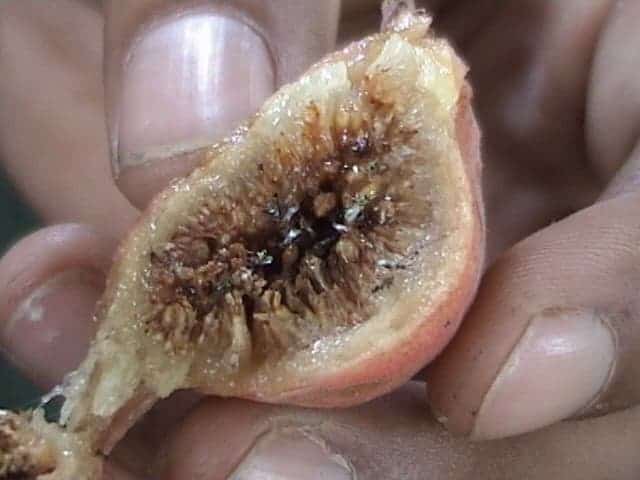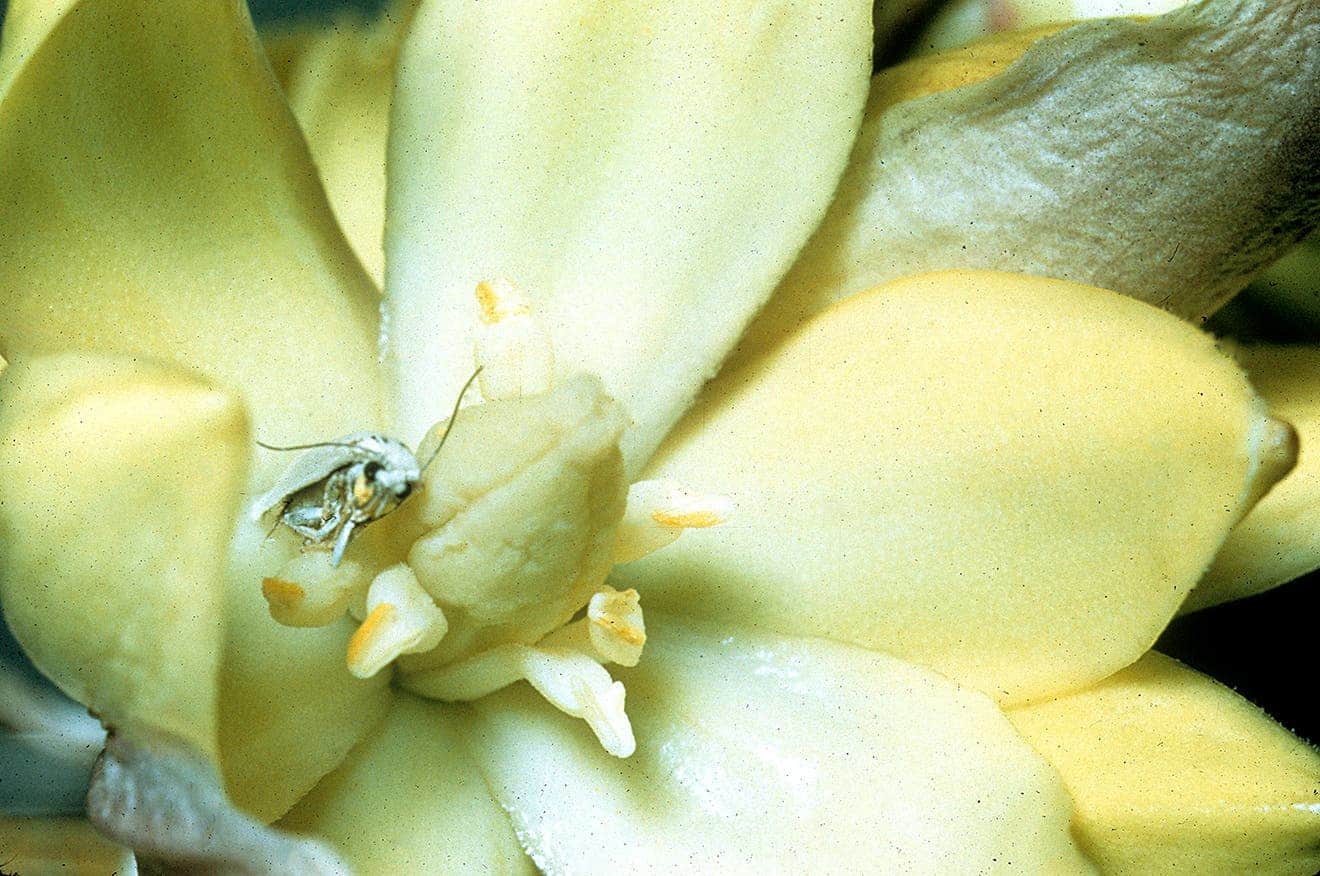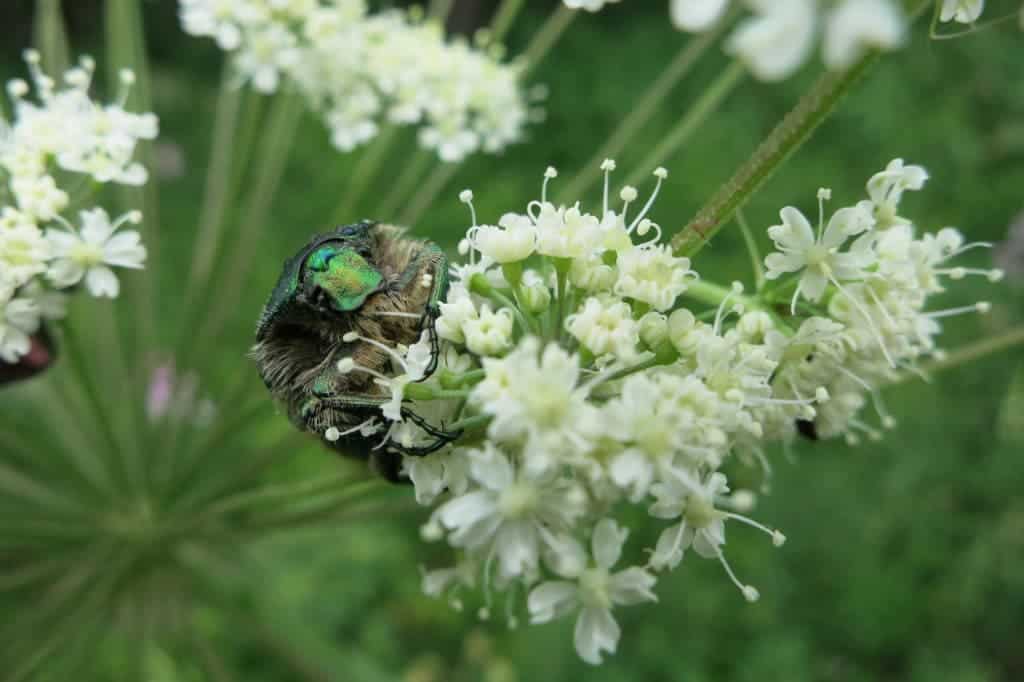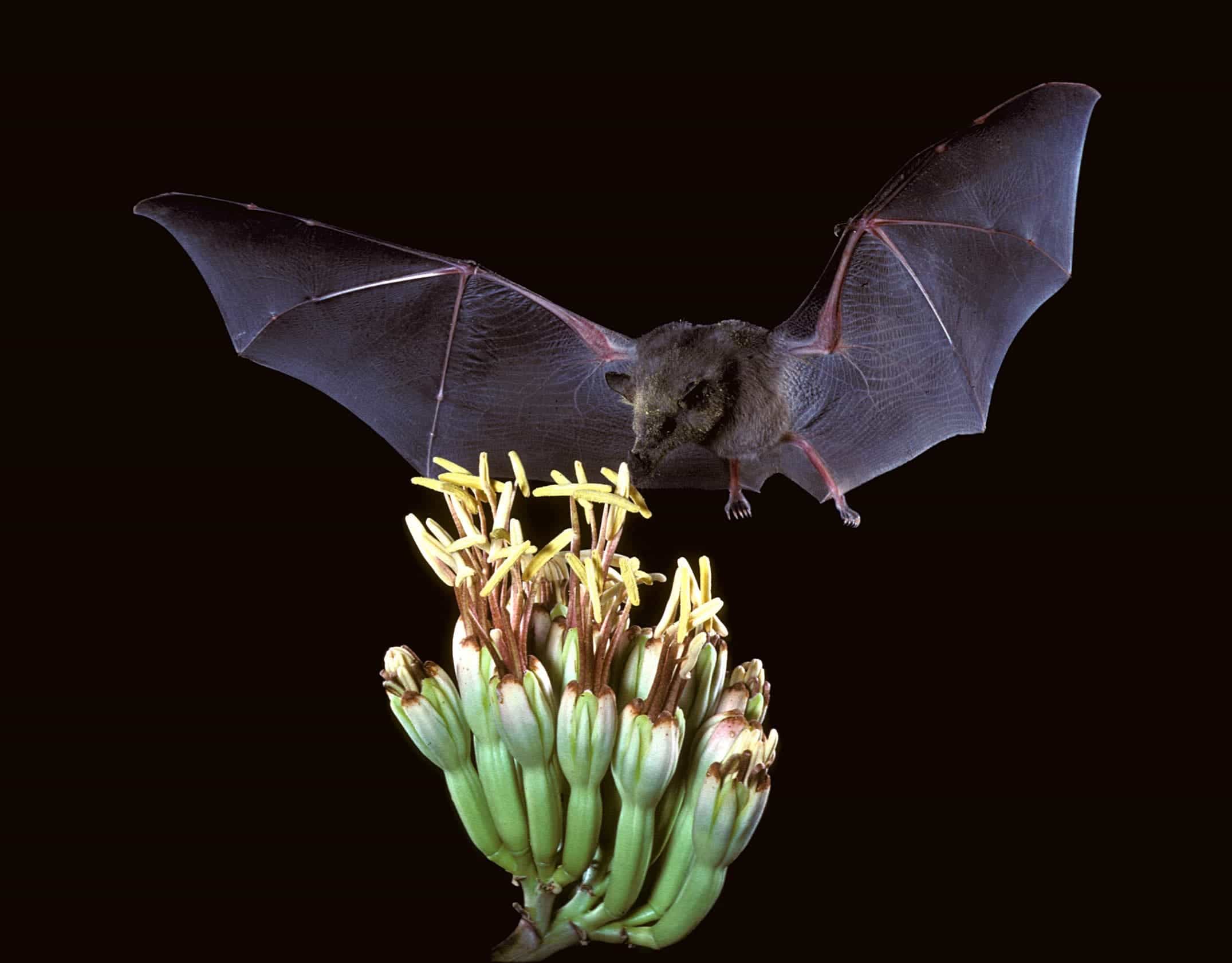When you think of pollinators, you probably think of honeybees. It is true—they are the most economically important pollinators and are responsible for most of the fruits and vegetables that we eat. But they are not the only ones. In terms of pollination services, honeybees provide 39%, while non-bee animals provide 38% and other bees provide 23%. So, pollinators other than bees pollinate as much as honeybees — who knew? In the USA alone non-bee pollinators provided pollination services that contributed to $10 billion of crops in 2010, while honeybees contributed to over $19 billion.
Pollination involves moving pollen from the male part of a flower, the stamen, to the female part, the stigma, and subsequent fertilization. When fertilized, the plant often produces a fruit and seeds. Pollinators usually get covered with pollen when gathering pollen or nectar from a flower. When they move to the next flower, the pollen can reach the stigma and cause pollination. There is an incredibly large range of non-bee pollinators that includes flies, butterflies and moths, beetles, ants, birds, bats, and wasps.
Here are some of the other pollinators that shouldn’t be overlooked:
Flies
Hoverflies (Syrphidae family) are often thought to be the most important pollinators after bees. Most pollinate a variety of flowers without being too picky, but some flowers specifically try to attract certain hover flies by mimicking aphid pheromones or their favorite colors. They can effectively pollinate sweet peppers, strawberries, and other economically important plants.

Another group of important pollinating flies are bee flies (Bombylius species). If you look at them quickly you might think that they are bees, but they are only imitators. Although they look like bees, their larvae actually feed on bee larvae. Bee flies have very long proboscises to pollinate flowers that have narrow, deep tubes. Other flies that pollinate are some male Bactrocera fruit flies and even adult mosquitos. They like pale and dull flowers with lots of pollen.

Carrion flies pollinate flowers that have a fetid odour, similar to rotting meat, dung, humus, or blood. These flowers are often also purple or red to seem even more like meat. Some of the carrion flies get tricked into laying their eggs on these flowers; their larvae starve due to lack of carrion.
Wasps
Different from bees, many wasps catch prey to feed their larvae instead of pollen, which is why they have stingers. Wasps need a lot of energy like bees. They are not as important pollinators as bees, because they are not fuzzy and therefore pollen doesn’t stick to them as much. Wasps from Masarinae, a subfamily of Vespidae, are called pollen wasps because they gather pollen to feed their larvae.

Figs are fruit that depend on tiny fig wasps to pollinate them. Fig flowers lie inside of immature fruit so the wasps need to be small to fit into a tiny hole to lay their eggs and pollinate. Fig wasps pollinate almost 1,000 different species of figs.
Butterflies & moths
Butterflies are not built for pollination, with their slender legs and elevated bodies, but they do transport some pollen as they flit from flower to flower in search of nectar. Butterflies like flowers that contain a lot of nectar. They have good vision and are attracted to flowers that are brightly colored — such as red, orange, and yellow. They like flowers in clusters, with a landing platform.

Moths also pollinate plants, though ones that flower at night. Some moths are specially adapted to certain plants. Some orchids are dependent on moths such as the hawk moth or Morgan’s sphinx. Yucca plants depend on Yucca moths to pollinate them. The flowers that moths pollinate are similar to those for butterflies except that they are usually a dull color.
Beetles
Beetles were among the first pollinators to visit flowers 200 million years ago, and they are still important! As you can imagine, some, more ancient, plant species are pollinated by them, such as magnolias and spicebush. They often eat petals and other parts of flowers and are known for sometimes defecating in the flowers.

The beetles that eat pollen, nectar, or flowers are the most important pollinators. They go for dull, fruity flowers that are open during the day—they can be large solitary flowers or clusters of small flowers.
Birds
The most well-known bird pollinators are, of course, hummingbirds. However, there are also other important bird pollinators, such as honeycreepers in Hawaii and honeyeaters in Australia. Brush-tongued parrots in New Guinea and sunbirds in the tropical old world also pollinate, especially deep flowers. In total, 2,000 bird species feed on nectar and therefore transport pollen to some degree.

The most attractive flowers for birds have petals that are curved out of the way, strong supports for perching, bright colors, and lots of nectar that is deep down. When the birds thrust their heads into the flowers to get the nectar, pollen sticks to their heads. Hummingbirds eat a lot of nectar, several times their weight each day, to have enough energy to beat their wings 70 times a second.
Bats
These flying mammals are important pollinators of some flowers in the tropics and deserts, more specifically in Africa, Southeast Asia, and the Pacific Islands. Two examples of bats that feed on nectar are the lesser long-nosed bat (Leptonycteris yerbabuenae) and the Mexican long-tongued bat (Choeronycteris mexicana).

Flowers that bats like are open at night, large, pale, fragrant, and contain lots of dilute nectar. Bats not only feed on the nectar, but also on insects in the flower. Though you might think that bats aren’t important pollinators, they are responsible for pollinating plants like mangoes, bananas, guavas, and agave.
Other
There are also some surprising pollinators, like mammals and lizards. Monkeys, lemurs, possums, rodents, and lizards are known to pollinate some plants. The largest pollinator in the world is the black and white ruffed lemur (Varecia variegata), which pollinates the traveler’s palm. The flowers are very tough and the lemurs pull them open and stick their snouts and tongues inside. Pollen sticks to their fur, which is then transported to the next flower. Honey possums (Tarsipes rostratus) have a tail that lets them hang from branches to look for flowers, and a very long tongue to drink nectar. They pollinate banksia and eucalyptus flowers. Some other mammals, like bush babies and sugar gliders also pollinate.

Even lizards can pollinate! An example is the Noronha skink (Trachylepis atlantica) from Brazil. It drinks the nectar from the leguminous mulungu tree’s flowers. The skinks climb inside the flower to drink and, in the process, the pollen sticks to their scales and gets deposited when they visit another flower.
It’s true—pollinators are more diverse than just the honeybees. We depend on all of them for the beautiful flowers and tasty fruits and vegetables in the world.


